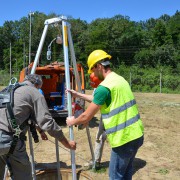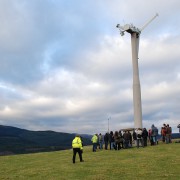The Environmental Review Process: What You Need to Know
 For the community, the goal of an environmental review is to understand the environmental impact of a project and make sure controls are in place to mitigate potential damage. For the business, the goal is to get permits granted so work can begin. Growing environmental awareness means regulatory entities may be stricter than ever. It’s important to treat the environmental review as a priority and give it enough attention. Here’s what you need to know to get through the environmental review process.
For the community, the goal of an environmental review is to understand the environmental impact of a project and make sure controls are in place to mitigate potential damage. For the business, the goal is to get permits granted so work can begin. Growing environmental awareness means regulatory entities may be stricter than ever. It’s important to treat the environmental review as a priority and give it enough attention. Here’s what you need to know to get through the environmental review process.
Start the Environmental Review Process Early
The environmental review can sometimes take a surprising amount of time to complete. This is because they can take into account a variety of factors such as the impact to local waterways, wetlands, air and wildlife. Getting a permit to work in or around wetlands can take nearly two years by itself. Even when the environmental review process ends with permits granted, they may incorporate restrictions based on the information presented during the review. This means that planning for the project is heavily impacted by the outcome of the review, which is another reason to try to complete the review as quickly as possible.
Begin by identifying all the permits required in each locality so preparation can begin as soon as possible. Multiple levels of government and multiple agencies within each level may be involved in reviewing your project.
Work With a Firm With Experience in the Environmental Review Process
Missing a required permit application can be costly. It isn’t always obvious when specific permits are required; the definition of wetlands and navigable waterways is the result of Supreme Court decisions. The best way to succeed in your environmental review is to work with an experienced company that knows what approvals you need to obtain. Work with a firm that has its own team and doesn’t use a subcontractor to perform this work.
An experienced firm will have relationships with the agencies that review the applications. This lets them keep up with changing requirements and avoid delays by preparing all the necessary documentation in the correct format.
Because multiple federal and state agencies are involved in some reviews, like the section 404 permit the Army Corps of Engineers issues for projects that impact wetlands, guidance from a team with a history of successful applications is crucial. There are multiple kinds of permits issued under section 404 and an experienced team can make sure your project applies for and receives the correct one.
Be Prepared for Both State and Local Regulations
Construction projects are impacted not only by federal environmental regulations like the Clean Water Act but also by state and local regulations. It’s important to realize that state definitions of terms like “wetland” can differ from the federal requirements. Plus, local standards often add additional requirements on top of the state’s. Depending on the location of the project, different reviews may be mandatory. In some cases, the local government may have the ultimate authority to issue the permit, while in others, the city can provide input but the state still makes the decision.
State and local requirements may be reviewed and approved on different timelines from the federal review, so working with a firm that knows the local process can help coordinate activity to meet the project’s needs.
Landpoint provides environmental services that span the entire scope of federal and state permitting, including wetlands and water permits, air emission permits, grassland surveys and site characterizations. Contact us to discuss how we can help you get through your environmental review.







